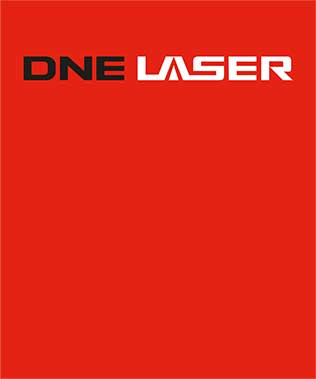The principle and the classification introduction of the metal laser cutting machine
Published:2020-02-24 Browse:161Editor in charge:DNE LASER
The Introduction of the principle and the classification of the metal cutting machine
1. Principle
The laser cutting machine uses the focused high power density laser beam to irradiate the material, so that the irradiated material melts quickly, vaporizes, ablates or reaches the ignition point, and at the same time, the molten material is blown off by the high-speed air flow coaxial with the beam, thereby the material is cut successfully. Laser cutting is one of the thermal cutting methods.
2. Classification
Laser cutting can be divided into four categories: laser vaporization cutting, laser melting cutting, laser oxygen cutting, laser scribing and controlled fracture.
1) vaporization cutting
Using a high-energy-density laser beam to heat the workpiece, the temperature rises rapidly, and it can reach the boiling point of the material in a very short time, and the material begins to vaporize to form steam. The ejection speed of these steams is very large, and at the same time as the steams are ejected, a cut is formed in the material. The heat of vaporization of materials is generally very high, so laser vaporization and cutting require a lot of power and power density. Laser vaporization cutting is mostly used for the cutting of extremely thin metal materials and non-metal materials (such as paper, cloth, wood, plastic and rubber, etc.).
2) melting cutting
In laser melting cutting, the metal material is melted by laser heating, and then the non-oxidizing gas (Ar, He, N, etc.) is sprayed through the nozzle coaxial with the beam, and the liquid metal is discharged by the strong pressure of the gas to form a cut. Laser melting cutting does not need to vaporize the metal completely, and the energy required is only 1/10 of the vaporization cutting. Laser melting cutting is mainly used for cutting materials that are not easily oxidized or active metals, such as stainless steel, titanium, aluminum and their alloys.
3) oxygen cutting
The principle of laser oxygen cutting is similar to oxyacetylene cutting. It uses laser as a preheating heat source and an active gas such as oxygen as a cutting gas. On the one hand, the blown gas interacts with the cutting metal to cause an oxidation reaction and emit a large amount of heat of oxidation; on the other hand, the molten oxide and melt are blown out from the reaction zone to form a cut in the metal. Because the oxidation reaction in the cutting process generates a lot of heat, the energy required for laser oxygen cutting is only 1/2 of the melting cutting, and the cutting speed is much faster than the laser vaporizing cutting and melting cutting. Laser oxygen cutting is mainly used for easily oxidized metal materials such as carbon steel, titanium steel and heat-treated steel.
4) scribing and controlled fracture
Laser scribing uses high-energy-density laser to scan the surface of the brittle material, so that the material is heated to evaporate a small groove, and then apply a certain pressure, the brittle material will crack along the small groove. Lasers used for laser scribing are generally Q-switched lasers and CO2 lasers.
Fracture control is the use of the steep temperature distribution produced by laser grooving, which generates local thermal stress in the brittle material and breaks the material along the small groove. The above is the principle introduction of the metal laser cutting machine. The metal laser cutting machine is a mechanical device that can typeset automatically, it can save a lot of materials, and the material cut by the metal laser cutting machine is very flat, and its cut is very smooth. Equipment such as metal laser cutting machines can reduce processing costs when performing operations. Most processing manufacturers will choose this equipment, which can reduce the manufacturing cost and the processing cost of the enterprise effectively.
 Bystronic (Shenzhen) Laser Technology Co., Ltd.
Bystronic (Shenzhen) Laser Technology Co., Ltd.